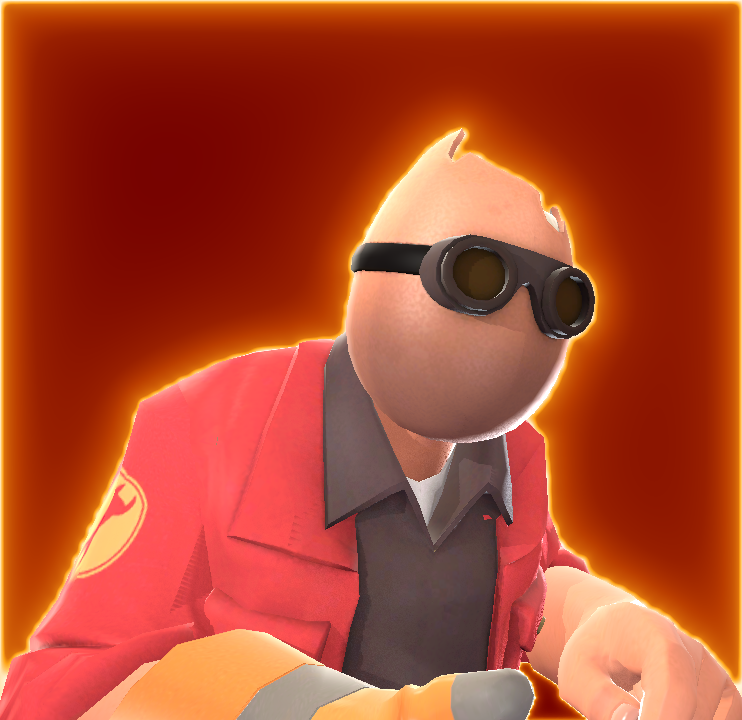Overview
A simple, step-by-step guide for bringing modded TF2 items to SFM. Whether from Gmod, or Mod.tf, this guide will give an understanding of the conversion process. This guide takes pieces of information found in other sources, in order to create a “one stop shop” for those new.
A Layman’s Introduction
You ever look at a TF2 mod on a random site, or a hex on Gmod, and think to yourself “man, I’d like to put that on one of my characters for this animation!” Yet how to do so evades you at every turn? No matter what keywords you put into the search, it comes up with everything you’re not looking for? I’ve felt that pain, and am willing to guide you out of this void of mind numbing torture called “research.”
Most of what I’m going to tell you, I’ve learned over a short time. I’ve focused my attention to other softwares for animation and modeling. Thus, there are things I still do not understand, and would greatly appreciate the input if there are solutions I’ve not found.
Required Programs
There are a few select programs required in order to continue through this walkthrough. A breif description, and download links bellow.
– Used to explore different file types as if it was a zip folder, kind of like Winrar or 7Zip but specialized.
– Only working download I could find[web.archive.org]
– It’s an open source photo manipulation program, useless on it own, but paired with the following plug-in, will come in real handy.
– Download[www.gimp.org]
– A plug-in for GIMP, that allows it to open Valve’s Texture File(VTF)s. This is important to have in order to fix texture problems that will occur with paintable items.
– Download[code.google.com]
-To mount the plug-in so GIMP can use it, place all the files in the C: Drive path “Users/<user>/GIMP <version>/Plug-ins.”
There are more items that can be used in this process, but these are the essentials.
Downloading and Extracting the Files

Once you download the files of your choice, launch GCF Scape and open your downloaded file. You should see a “materials” and “models” folder in the large display. Drag and drop both folders into a file of your choice, here I decided to keep things clean and have an extraction folder.
Before continuing, within the “materials” folder, there’s another folder named “backpack.” This is useless for us, and is better off being deleted.
Inside of the “/steamapps/common” files for Garry’s Mod, there’s an executable in the bin called “Gmad.” This functions as an exporter for addons you have downloaded and mounted to Garry’s Mod (when you first launch Garry’s Mod with the addon installed). You’ll locate your mounted workshop items in “/steamapps/common/garrysMod/garrysMod/addons.” From there, you can drag and drop any addon file onto the “Gmad” executable, and it will decompile it.
Reorganizing and Renaming Files/Folders
Once all the files are extracted, the file paths for the “material” and “model” folders will most likely look like this.
This pathway will not work in SFM due to one thing. SFM uses mirrored pathways, meaning the “material” and “model” folder paths look identical bar the “material” folder being one step behind.
The way to fix this is by adding and subtracting folders to the “models” path until it looks like the “materials” path. It will look like this by the end.
With that done, the models and textures should be at the end of those paths. The only problem left for this stage, is that the model names aren’t the same as the materials.
The Materials
The Models
What we must do is copy the name of the basic material, and replace the model’s name without getting rid of the extensions. It should look like this when you’re finished.
Bringing the Files to SFM and Fixing Textures

When porting Gmod TF2 hexes, there’s a chance that the model will be transparent. This means that the texture paths are incorrect, yet even after all the correct steps are taken it happens. My assumption is that it’s due to how it was hexed. I don’t know how to fix this.

This is because the alpha channel of the VTF textures function differently in SFM, as opposed to TF2 or Garry’s Mod. To fix this, we will import the texture into GIMP using the VTF plug-in. It will look something similar to this.


The final things to do in GIMP is to right click the floating layer, and select anchor layer. This applies the floating layer to the texture. Right click the texture, and uncheck disable layer mask. When the image looks like this, you’re ready to export.
Exporting Textures


Conclusion
With that, you’ve successfully ported a TF2 mod into SFM. There are still some things to fine tune once you get the hang of this, but this is the bread and butter of it.
Sources
The Freakin’ Scout’s a Spy. “Guide :: Hexing 101.” Steam Community, Valve, 16 May 2017, 1:11am, steamcommunity.com/sharedfiles/filedetails/?id=922631904.
Demi. “SFM Tutorial: Fixing Textures.” Youtube, 11 April 2017, .










